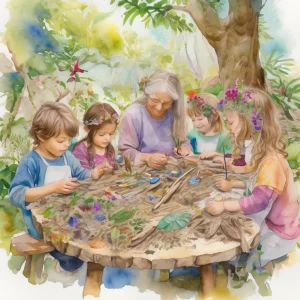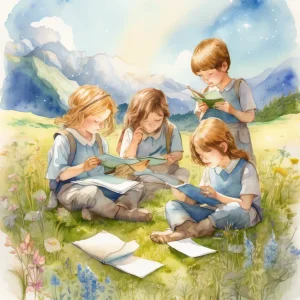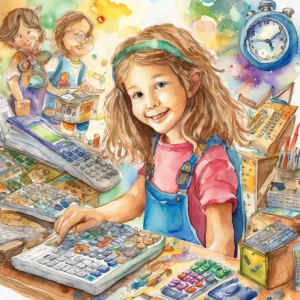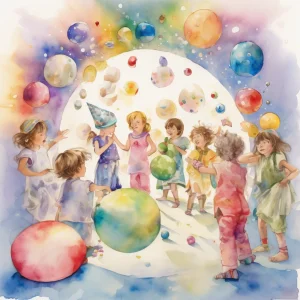Activity
Similar Activities
Enchanted Garden: Nature Sculpture Garden Adventure
Children’s Age: 4–6 years
Activity Duration: 10 – 25 minutes
Engage children aged 48 to 72 months in the "Nature Sculpture Garden" activity, promoting creativity and empathy. Using natural materials like sticks and leaves, along with clay an…
Activity Duration: 10 – 25 minutes
Cultural Creatures: Stop-Motion Animation Adventure
Children’s Age: 4–9 years
Activity Duration: 10 – 25 minutes
An interactive activity using technology to create stop-motion animations exploring plants and animals from diverse cultures.
Activity Duration: 10 – 25 minutes
Enchanted Tea Party Adventure: A Magical Journey
Children’s Age: 3 years
Activity Duration: 10 – 15 minutes
Join us for a Magical Tea Party Adventure! Enhance your child's play skills, social-emotional growth, and language abilities through a whimsical tea party experience. Gather teacup…
Activity Duration: 10 – 15 minutes
World Wonders: The Virtual World Tour Adventure
Children’s Age: 5–18 years
Activity Duration: 35 minutes
Let's go on a Virtual World Tour Adventure! You can discover countries, cultures, and famous landmarks using a computer or tablet with internet access. If you have headphones, you …
Activity Duration: 35 minutes
Enchanted Digital Family Storytime Journey
Children’s Age: 6 months – 1.5 years
Activity Duration: 5 minutes
Engage your child with "Digital Family Storytime," a captivating activity tailored for children aged 6 to 18 months. Through interactive storytelling on a tablet or smartphone, thi…
Activity Duration: 5 minutes
Harmony Haven: Virtual Music Band Challenge
Children’s Age: 10–12 years
Activity Duration: 20 – 30 minutes
Engage children in the "Virtual Music Band Challenge," a fun and educational activity combining music creation with healthy lifestyle tips. Participants will need devices with inte…
Activity Duration: 20 – 30 minutes
Enchanted Nature Scavenger Hunt and Discovery
Children’s Age: 6–10 years
Activity Duration: 30 minutes
The "Nature Scavenger Hunt and Data Collection" activity is designed for children aged 6 to 10 to enjoy a fun and educational outdoor experience. By exploring nature and collecting…
Activity Duration: 30 minutes
Enchanted Glow: Gentle Lights Exploration
Children’s Age: 0 – 6 months
Activity Duration: 5 – 10 minutes
"Gentle Lights Exploration" is an engaging activity tailored for infants aged 0 to 6 months, offering a soothing and enriching sensory experience. Through gentle lights and interac…
Activity Duration: 5 – 10 minutes
Empathy Through Art: Digital Diversity Collage Journeys
Children’s Age: 2–2.5 years
Activity Duration: 10 minutes
The "Digital Diversity Collage" activity is designed to foster empathy, adaptive skills, and cultural awareness in children aged 24 to 30 months using art and creativity. You will …
Activity Duration: 10 minutes
Eco-Friendly Math Adventure: Crafting Math Tools & Challenges
Children’s Age: 6–7 years
Activity Duration: 30 minutes
Embark on the 'Eco-Friendly Math Adventure' for a blend of learning and eco-awareness! Gather recycled materials like cardboard, markers, and glue. Guide kids to create eco-friendl…
Activity Duration: 30 minutes
Enchanted Seasons: Seasonal Nature Hunt
Children’s Age: 6–10 years
Activity Duration: 25 – 30 minutes
"Seasonal Nature Hunt" is a delightful activity designed for children aged 6 to 10, focusing on cognitive development, nature appreciation, and logical reasoning. Kids can explore …
Activity Duration: 25 – 30 minutes
Imaginary Adventures: Mini Bowling Feelings Story Game
Children’s Age: 2–5 years
Activity Duration: 10 minutes
An engaging activity promoting sensory development, creativity, reading, and storytelling.
Activity Duration: 10 minutes





























